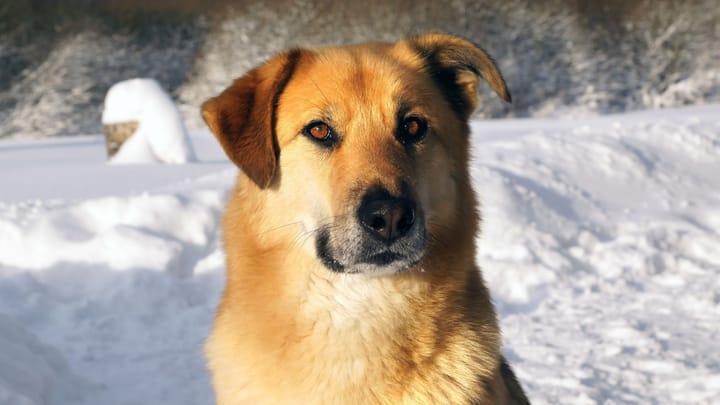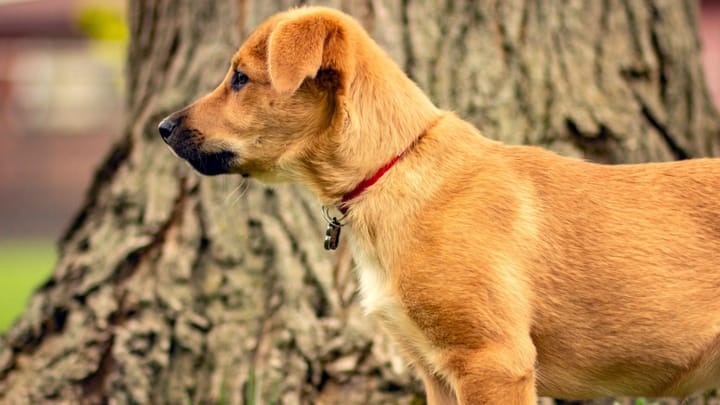Chinook


The Chinook is a sled dog originating from the United States. This breed is known for its intelligence, patience, enthusiasm and, at the same time, for being a tough, family-friendly working dog.
|
Life expectancy |
The Chinook has a life expectancy of between 12 and 15 years |
|
Temperament |
|
|
Size |
Large
|
|
Adult size |
Female
Between 21 and 25 in
Male
Between 23 and 27 in
|
|
Adult weight |
Female
Between 55 and 88 lb
Male
Between 55 and 88 lb
|
|
Coat colour
|
Brown Red Sand |
|
Type of coat
|
Short Long |
|
Eye colour
|
Brown
|
A peculiarity of the Chinook is that it does not reach full physical maturity until the age of four to five years.
More details about the Chinook
Chinook: Origins and history
The Chinook dog first appeared in the early 20th century. This breed was born from the crossing of mastiff-type dogs with Greenland huskies, an idea that came from polar explorer Arthur Treadwell Walden. The young adventurer's passion for polar travel, in the midst of the gold rush, led him to the creation of more resistant sled dogs for his explorations. When breeding, he placed particular emphasis on strength, endurance, speed and a friendly character. The first litter came from a female Greenland husky and a male Mastiff farm dog. One of the puppies born in 1917 was named Chinook. Arthur Treadwell Walden later gave the breed the name Chinook, after the lead sled dog on his team. "Chinook" comes from the Inuit language and means "warm winter wind".
After Walden's death in 1947, the Chinook dog almost went extinct. In 1965, the Guinness Book of World Records listed the Chinook as the rarest dog breed in the world, with a population of only 125 individuals. By 1981, there were only 28 Chinooks left, but efforts have been made in recent years to preserve the American dog breed. In 1994, the Chinook was recognized by the United Kennel Club (UKC), and by the American Kennel Club (AKC) in 2013.
Chinook: Characteristics
Chinook: Behaviour
Training a Chinook
Chinooks are people-oriented and eager to please, making them very easy to train.
Chinook: Lifestyle
Breed compatibility Chinook
Chinook: Purchase price
There are efforts in Europe, for example in Switzerland, to breed this rare dog breed. But for the time being, Chinook breeders are still mostly located in the United States. Interested parties can find advertisements via the Chinook Club of America, Inc., among others. Breeders usually only disclose the prices of a puppy after an exchange with interested parties.
Chinook breeders usually set strict criteria when selecting future owners. Many interested parties are excluded from the list of candidates due to a lack of knowledge about the breed. The chances of acquiring a Chinook puppy are therefore not particularly high. If you are flexible when looking for a future four-legged family member, you can switch to other friendly sled dogs such as the Samoyed. There are also many large sporting and mixed breed dogs that are suitable as family dogs in animal shelters.
Chinook: Shedding
Heavy !
The Chinook has a thick, medium length, smooth coat, that will need brushing regularly. During the moulting season, a Chinook typically needs to be brushed daily. This helps with shedding and prevents tufts of hair from spreading throughout the house.
Chinook: Health
Chinooks are very robust, healthy dogs.
Originally bred for Polar excursions, Chinooks do not enjoy hot weather.
Chinooks have a thick undercoat, which protects them from cold weather.
Chinooks can have a tendency to put on weight, particularly if their diet isn't carefully managed.
Chinooks are usually healthy dogs, but they can be prone to hip dysplasia and eye diseases (e.g. cataracts). Breeders should have carried out health screening before the litter is born.





